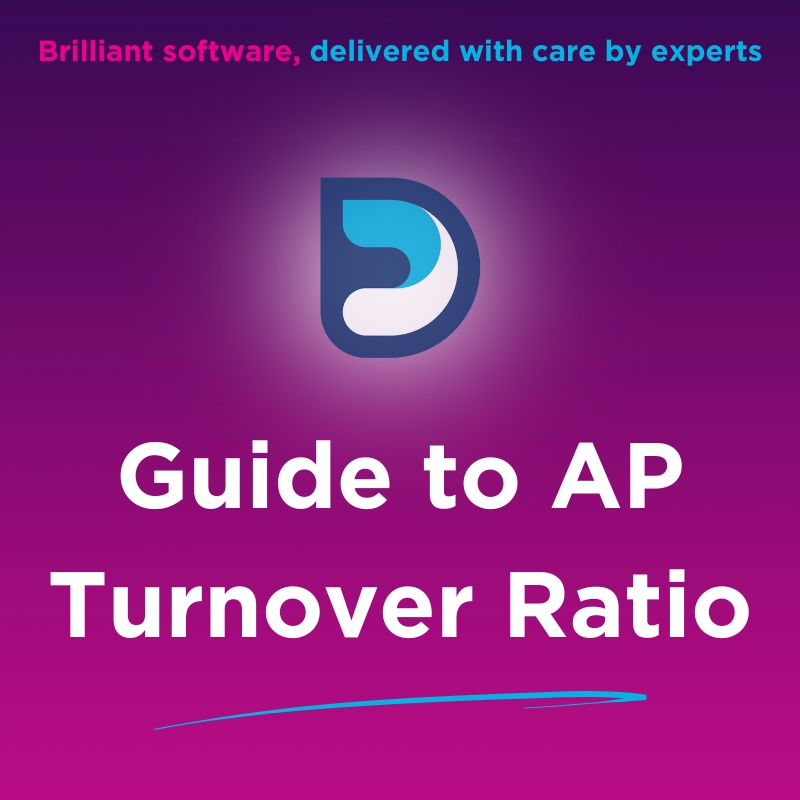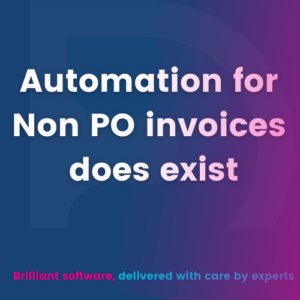Documation’s Ultimate Guide to AP Turnover Ratio
Understanding the Accounts Payable (AP) Turnover Ratio is crucial for effective financial management. This ratio provides insights into how efficiently a business is paying off its suppliers and managing its short-term liabilities.
By delving into this guide, you’ll gain a comprehensive understanding of the AP Turnover Ratio, how to calculate it, and its implications for your business. Did you know that a high AP Turnover Ratio indicates efficient payment processing and strong supplier relationships?
What is the Accounts Payable Turnover Ratio?
The Accounts Payable Turnover Ratio measures how often a business pays its suppliers within a specific period, typically a year. This ratio is a key indicator of a company’s liquidity and operational efficiency – it helps assess how well a company manages its accounts payable process and its ability to meet short-term obligations.
Calculating the AP Turnover Ratio
To calculate the AP Turnover Ratio, use the following formula:
AP Turnover Ratio = Total Purchases from Suppliers / Average Accounts Payable
Take the Total purchases from suppliers over a given period (usually a year) and divide it by the average accounts payable. (Calculate the average accounts payable by taking the balance at the start of the year, added to balance at end of year and divide by 2.)
The resulting figure shows the number of times an organisation pays its suppliers in a year. For example, a business that has total purchases from suppliers of £500,000 in a year, and an average Accounts Payable of £50,000 pays its suppliers 10 times a year.
Converting AP Turnover Ratio to Days Payable Outstanding (DPO)
Converting the Accounts Payable (AP) Turnover Ratio to Days Payable Outstanding (DPO) is useful for several reasons.
Standardised Time Frame
DPO expresses the AP Turnover Ratio in terms of days, making it easier to understand and compare across different periods and companies. Since business operations are often tracked in days, DPO provides a clear and intuitive measure of payment practices.
Cash Flow Management
Understanding DPO helps businesses manage their cash flow more effectively. A higher DPO means the company takes longer to pay its suppliers, which can improve cash flow by retaining cash for a longer period. Conversely, a lower DPO indicates quicker payments, which might benefit supplier relationships but could strain cash reserves.
Supplier Relationship Management
DPO provides insights into how well a company manages its relationships with suppliers. Companies with a very high DPO might be stretching their payment terms, which could strain supplier relationships. Monitoring DPO helps ensure that payment practices align with supplier expectations and contractual terms.
Operational Efficiency
By analysing DPO, companies can gauge their operational efficiency. Efficient payment processes typically result in a DPO that aligns well with industry standards and supports overall business operations without compromising liquidity.
Benchmarking
DPO allows for easier benchmarking against industry standards and competitors. Industries have different typical DPO ranges, and converting the AP Turnover Ratio to DPO enables companies to see how their payment practices compare to others in the same sector.
Financial Health Indicator
DPO is a key indicator of a company’s financial health and its ability to manage short-term liabilities. It provides stakeholders with a clear picture of how well the company handles its payables, which is critical for assessing overall financial stability.
To calculate the days payable outstanding divide the days (365) by the Accounts Payable Ratio.
DPO = 365 / AP Turnover Ratio
With this formula an organisation with an AP turnover ratio of 10 takes an average of 36.5 days to pay its suppliers. Stakeholders can now compare this 36.5 days to industry standards or historical performance to draw meaningful conclusions about the company’s payment practices and financial health.
By converting the AP Turnover Ratio to DPO, companies can gain a clearer, more actionable understanding of their payment cycles and make more informed financial and operational decisions.

How Can You Analyse Your Accounts Payable Turnover Ratio?
Comparative Analysis
Compare your AP Turnover Ratio with industry standards to understand where your business stands.
Trend Analysis
Analyse the trend of your AP Turnover Ratio over multiple periods to assess whether your payment efficiency is improving or declining.
Supplier Terms Analysis
Evaluate how your AP Turnover Ratio aligns with your suppliers’ payment terms. A significantly higher ratio might indicate missed opportunities for longer credit terms.
What is a Good Accounts Payable Turnover Ratio in Days?
A ‘good’ Days Payable Outstanding (DPO) varies by industry. For example, manufacturing companies typically have a higher DPO due to longer production cycles, while retail companies might have a lower DPO due to faster inventory turnover. Generally, a DPO that aligns well with industry norms and maintains good supplier relationships is considered optimal.
Strategies to Achieve an Optimal AP Turnover Ratio
Negotiate Favourable Payment Terms – Work with suppliers to extend payment terms without compromising relationships.
Improve Cash Flow Management – Ensure that your cash flow is steady to meet payment obligations on time.
Implement AP Automation – Utilise technology to streamline the AP process, reducing errors and ensuring timely payments.
Is a Higher or Lower AP Turnover Ratio Better?
A higher AP Turnover Ratio suggests that a company is paying its suppliers quickly, which can indicate good liquidity but might mean missed opportunities for using available credit. A lower ratio implies longer payment terms, which can improve cash flow but might strain supplier relationships. The ideal ratio balances liquidity with favourable credit terms.
Monitoring Your AP Turnover Ratio
Use financial management software to track your AP Turnover Ratio in real-time. AP automation solutions have reporting modules that can regularly review your KPIs using AP aging reports and ensure that your ratio aligns with your financial strategy and industry standards.

Importance of Your Accounts Payable Turnover Ratio
The AP Turnover Ratio is a critical financial metric that provides valuable insights into a company’s efficiency in managing its short-term liabilities. This ratio measures how often a business pays its suppliers over a specific period, typically a fiscal year. Understanding and monitoring the AP Turnover Ratio is crucial for several reasons, each contributing to the overall financial health and operational efficiency of a business.
Enhances Liquidity Management
One of the primary reasons the AP Turnover Ratio is important is its role in managing a company’s liquidity. Liquidity refers to the ability of a business to meet its short-term obligations using its available cash or assets. A high AP Turnover Ratio indicates that a company is paying its suppliers quickly, which can be a sign of good liquidity. However, it’s essential to balance this with the need to maintain adequate cash flow. By monitoring this ratio, companies can ensure they have enough cash on hand to cover other expenses while still meeting their obligations to suppliers.
Indicates Operational Efficiency
The AP Turnover Ratio serves as an indicator of operational efficiency. A higher ratio suggests that a company is efficient in processing and paying its invoices, which can lead to stronger supplier relationships and possibly more favourable credit terms. Conversely, a lower ratio may indicate inefficiencies in the accounts payable process, such as delays in invoice processing or cash flow issues. Regularly analysing this ratio helps businesses identify and rectify operational inefficiencies, leading to smoother and more efficient business operations.
Supports Supplier Relationship Management
Maintaining strong relationships with suppliers is critical for the smooth operation of a business. The AP Turnover Ratio can provide insights into how well a company manages its supplier relationships. Consistently paying suppliers on time, as indicated by an appropriate AP Turnover Ratio, helps build trust and reliability, potentially leading to better credit terms and discounts. On the other hand, a low AP Turnover Ratio might signal to suppliers that the company is slow to pay, which could strain relationships and lead to less favourable terms or supply disruptions.
Facilitates Benchmarking and Industry Comparison
The AP Turnover Ratio allows businesses to benchmark their performance against industry standards and competitors. Different industries have varying standards for what constitutes a good AP Turnover Ratio, influenced by factors such as production cycles and payment terms. By comparing their ratio to industry norms, companies can gain insights into their relative performance. This benchmarking process helps businesses identify areas for improvement and develop strategies to align their practices with industry best practices.
Aids in Financial Planning and Decision-Making
The AP Turnover Ratio is a valuable tool for financial planning and decision-making. It provides a clear picture of the company’s short-term financial obligations and how efficiently they are being managed. This information is crucial for making informed decisions about budgeting, cash flow management, and strategic planning. For instance, if a company’s AP Turnover Ratio is lower than desired, it might need to renegotiate payment terms with suppliers or improve its invoicing processes to enhance cash flow management.
Reflects Financial Health and Stability
A company’s AP Turnover Ratio is a key indicator of its overall financial health and stability. Investors, creditors, and other stakeholders often look at this ratio to assess the company’s ability to meet its short-term liabilities. A consistently high AP Turnover Ratio can be a sign of a well-managed company with strong financial discipline, making it more attractive to investors and lenders. Conversely, a low ratio may raise concerns about the company’s liquidity and financial management practices.
Facilitates Efficient Cash Flow Management
Effective cash flow management is critical for the sustainability of any business. The AP Turnover Ratio provides insights into how well a company manages its cash outflows related to supplier payments. By maintaining an optimal AP Turnover Ratio, businesses can better align their cash inflows and outflows, ensuring that they have sufficient cash available to meet other operational needs. This balance helps prevent cash shortages and supports the company’s overall financial stability.
Integrating AP Automation Solutions
The implementation of Accounts Payable automation solutions can significantly enhance the efficiency of managing payables. Automated systems streamline the AP process, reduce errors, and ensure timely payments, which can improve the AP Turnover Ratio. By leveraging technology, businesses can gain real-time insights into their payables, allowing for more accurate and efficient financial management. This technological integration supports a more favourable AP Turnover Ratio and contributes to improved financial health.
In conclusion, the Accounts Payable Turnover Ratio is a vital metric for assessing and managing a company’s financial health and operational efficiency. It provides valuable insights into liquidity management, operational efficiency, supplier relationships, and overall financial stability. By understanding and regularly monitoring this ratio, businesses can make informed decisions, improve their financial practices, and maintain strong relationships with suppliers. Integrating AP automation solutions further enhances these benefits, ensuring a robust and efficient accounts payable process.





